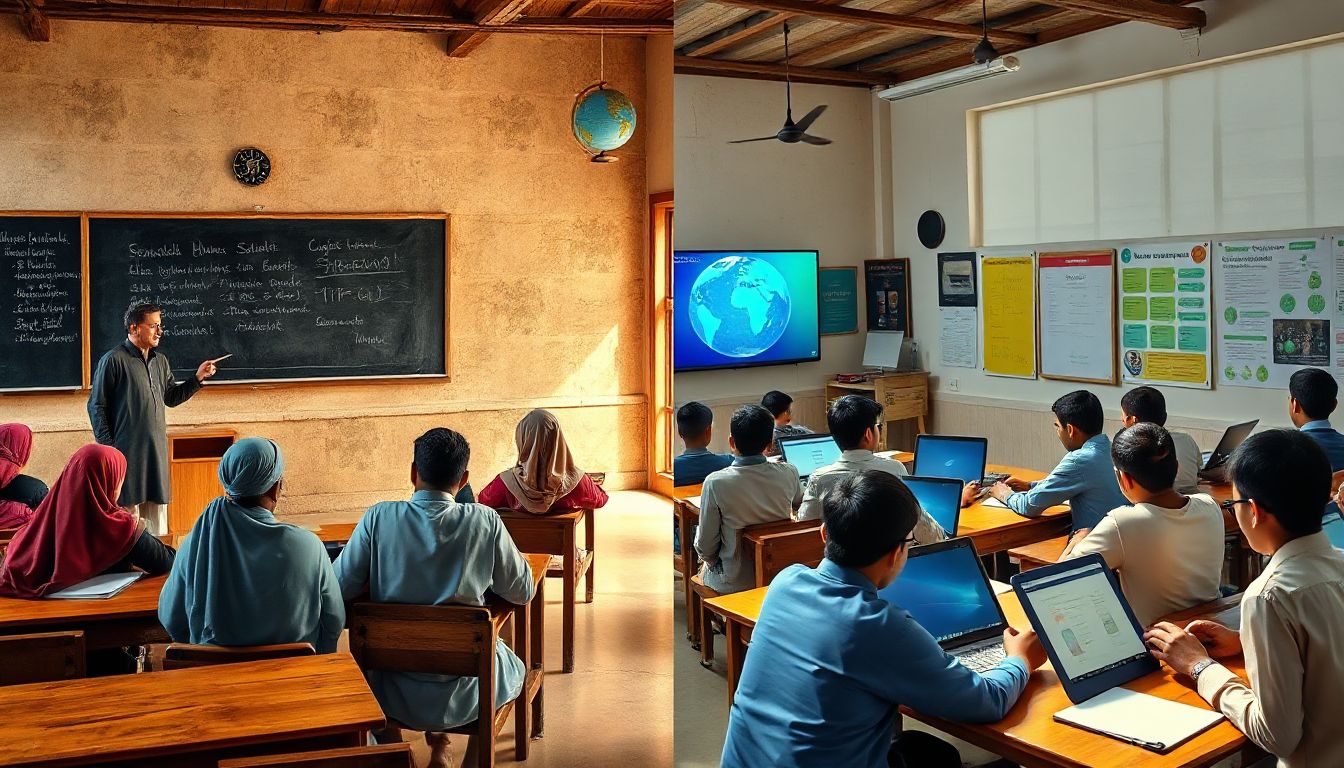
Why Pakistan’s System Is Falling Behind in the Global Race
Introduction
Education shapes a country’s future. It fuels economic growth and social progress. When a nation’s schools fall behind, it risks losing its place in the world. Pakistan’s educational system faces many hurdles. From outdated teaching methods to limited resources, challenges remain. The big question: Should Pakistan stick to traditional teaching or embrace modern learning methods? The answer impacts the country’s ability to compete globally.
The Historical Roots of Pakistan’s Education System
The foundational principles of Pakistan’s educational structure
Pakistan inherited much of its schooling system from colonial times. Schools focused mainly on rote learning, where memorization was king. Teachers drilled students with facts, not critical thinking. Religious and ideological influences also shaped curriculum content. These elements created a system that prioritized memorization over understanding.
Evolution over the decades
Over the years, Pakistan’s education has seen some reforms, but change has been slow. Many initiatives aimed to improve literacy but faced setbacks. Compared to other developing countries, Pakistan’s education system remains stagnant. Countries like South Korea and Singapore advanced through innovation, while Pakistan largely stuck to tradition.
Challenges of Traditional Teaching Methods in Pakistan
Rote learning and memorization
In Pakistan, students often memorize answers instead of understanding concepts. This approach limits critical thinking and problem-solving. Such skills are vital in today’s job markets but are rarely nurtured. As a result, creativity suffers, and students find it hard to think for themselves.
Teacher training and quality
Many teachers lack proper training. Opportunities for professional development are limited. Low motivation and absenteeism further weaken the system. Teachers often stick to outdated methods, which frustrates students and hampers learning.
Infrastructure and resources
Schools in rural areas face severe shortages. Poor infrastructure makes daily learning difficult. Many lack basic facilities like libraries or science labs. Modern technological tools are scarce, making it hard to prepare students for the digital age.
The Mismatch Between Education and Modern Economic Demands
Skills gap in the Pakistani workforce
Many jobs in Pakistan require digital skills and technical knowledge. But the curriculum rarely covers these areas. Graduates leave school without the skills employers want. This mismatch makes it tough for youth to find good jobs.
Impact on employability
High unemployment among educated youth is a common issue. Many are underemployed or leave the country to find better opportunities. This brain drain hurts Pakistan’s economy and development prospects.
Countries that successfully match education with economic needs
South Korea and Singapore serve as prime examples. They revamped their education systems to emphasize skills that match their industries. As a result, their economies thrived, and their youth found meaningful work.
The Urgent Need for Curriculum Reform and Pedagogical Innovation
Incorporating 21st-century skills
Modern schools teach more than math and history. Critical thinking, creativity, teamwork, and communication are now essential. Integrating STEM subjects helps prepare students for future careers.
Use of technology in classrooms
Digital tools like e-learning platforms can widen access. They help overcome barriers, especially in rural areas. Tools like tablets and online lessons bring new life to old classrooms. This makes learning more engaging and effective.
Promoting inclusive and equitable education
Addressing gender gaps and helping students with special needs is vital. Strategies like targeted programs reduce dropout rates. A fair system ensures every child has a chance to succeed.
Policy and Implementation Gaps
Weak governance and political interference
Many reforms stall because of political issues. Governments change, and so do priorities. This disrupts steady progress. Consistent policies and better leadership are needed.
Funding limitations
Education budgets are often insufficient. Resources get allocated poorly or are delayed. Without proper funding, schools cannot upgrade or expand.
Stakeholder engagement
The private sector, NGOs, and communities can help improve education. Their involvement brings fresh ideas and resources. Better collaboration can speed up positive change.
Actionable Steps to Bridge the Gap
Revamping teacher training programs
Focus on modern teaching methods and digital skills. Well-trained teachers inspire students and improve learning outcomes.
Enhancing infrastructure and resource allocation
Invest in school facilities and technology. Better infrastructure makes schools attractive and conducive to learning.
Curriculum overhaul aligned with global standards
Include practical skills and foster critical thinking. Prepare students for real-world challenges, not just exams.
Strengthening public-private partnerships
Encourage partnerships that improve access and quality. Private institutions can pilot innovative approaches.
Monitoring and evaluation mechanisms
Use data to track progress. Regular assessments help identify issues quickly and guide reforms.
Conclusion
Switching from traditional to modern teaching methods is critical for Pakistan’s growth. Education reforms must be comprehensive, covering curriculum, teachers, infrastructure, and policies. Only through honest efforts can Pakistan improve its schools and compete on the global stage. The future depends on giving every child a chance to learn the skills of tomorrow. Bold action starts today—so policymakers, educators, and stakeholders must work together for a brighter future.


